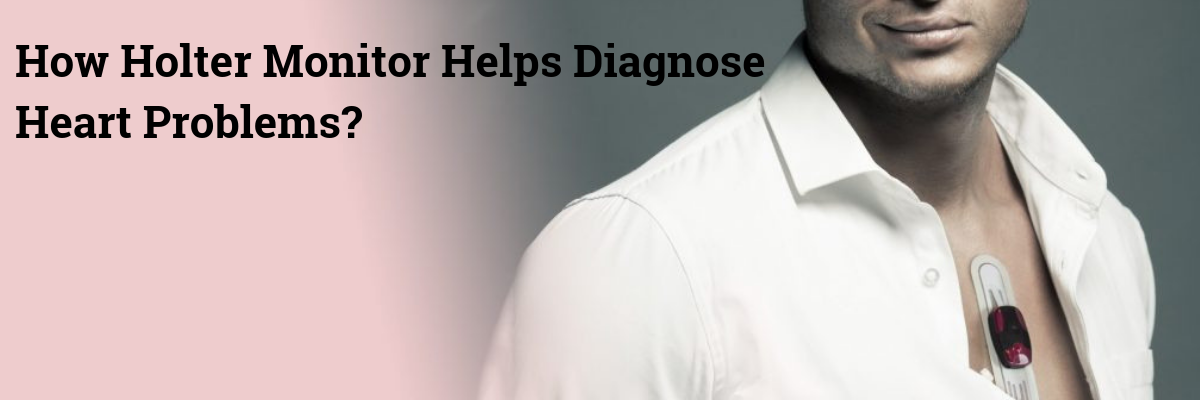

call us:1800 5999 5999
+91 72 0005 0005
24-Hours Holter Monitoring: How it Helps Diagnose Heart Problems?
Posted on October 18, 2018
24-hours Holter monitoring is being lauded and considered as a necessary procedure for the better diagnosis of heart problems. Indeed, these monitors are a significant innovation in the field of mobile cardiac monitoring, especially if it is compared to other heart monitoring procedures like event monitors and 12 lead ECGs.
The facts that would be stated below would cover some specific cases that highlight the usefulness of this kind of monitoring in pinpointing heart ailments as well as give an overview of the general functionality of 24-hours Holter monitoring.

What is 24-Hours Holter Monitoring?
Before we begin to underscore the ways that this kind of monitor is able to detect heart arrhythmia, it’s important for you to gain a few background information about 24-hours Holter monitoring.
If you’re not already aware of it, Holter monitors are essentially electrocardiogram devices that can be attached to different areas of your chest. Most of the time, electrical or lead cords with electrodes at their ends are used for this purpose, and a gel is used as an adhesive. Once the device is properly set, it is now able to monitor your heart on a continuous basis. Firm and proper attachment of the cords is nothing short of necessary in order to ensure accurate readings. Any Holter monitoring service you choose will say the same.
What Makes It Effective in Diagnosing Heart Problems?
Consistent monitoring is the primary benefit of 24-hours Holter monitoring. As said above, 12 leads electrocardiogram may not be enough to diagnose cardiac arrhythmias because it is limited to a certain time only. More often than not, the monitoring only takes a few minutes.
This is not recommended for patients that have rhythm irregularities that only appear during specific circumstances. It could, for instance, manifest itself if you’re doing a certain activity. Even certain heart irregularities have a chance to appear out of nowhere. Of course, there are also cases of silent issues that are actually very dangerous and potentially life-threatening that might not be detected in a 12 lead electrocardiogram.
As an example, this could not be truer in patients that are suffering from syncope whose main cause is ambiguous. This practically includes cases wherein full physical, neurological, electrocardiogram, and hypotension exams all came back negative, but the patient still experiences loss of consciousness from time to time.
24-hours monitoring has been found to reveal arrhythmias and other cardiac symptoms that happened to bypass the said exams. This is especially true in the case of patients who have been verified to have a history of cardiac issues or have had an abnormal ECG reading in the past. That being said, this practically proves just how effective this kind of monitoring is for such patients. In fact, it is even recommended to do 24-hours monitoring first before doing any other electrophysiological studies.
How Does 24-Hours Holter Monitoring Usually Go?
The attached electrodes are the primary components responsible for picking up cardiac activity. Since the heart sends electrical signals as it beats, the electrodes pick these up then transmit them to the monitor for reference and recording. The monitor is also responsible for detecting delays in signal transmission or whether your heart is getting adequate amounts of oxygen or not.
As you undergo monitoring, you would usually be also tasked to record the significant activities you do while wearing the device. You would also be requested to write down any tell-tale symptoms of heart issues like racing heartbeats and any kind of chest pain, to cite a few. This data is vital in helping your doctor provide a more effective analysis and diagnosis of any heart issue you might have, assuming they would arise as you are wearing your assigned monitor.
After the testing duration, you would be required to go back to your doctor’s office not only to have your recording analyzed but also to have the monitor properly removed from your body. Whether you would be required to undergo other tests would be entirely up to your attending physician.
Emphasizing the Long-Term Benefits of 24-Hours Holter Monitoring
The ultimate value of 24-hours Holter monitoring is apparent in its ability to make an early diagnosis of potentially serious cardiac arrhythmias. You can only imagine the amount of heart Infractions/Ischemia and strokes (and subsequent lives that would be extended and saved) that such an initiative can mitigate and fully prevent. This procedure is not limited to diagnosis alone as well. After all, doctors can also use it to find out whether the specific medicine that they ask patients to take is working or not It also allows them to make easy adjustments to doses of medicine that you are taking.
Since it encourages patients to take an active part in diagnosing heart disease that they might have, it also gives them an invaluable insight on how their heart works and what its current condition is This amount of knowledge could not be acquired in any kind of testing procedure, unless the patient asks his doctor to explain it to him point-by-point.
Tags: 24 Hour Holter Monitor, Heart Monitor, Heart Monitoring Device, Holter Monitor